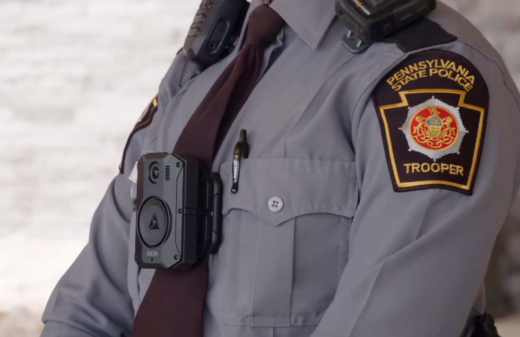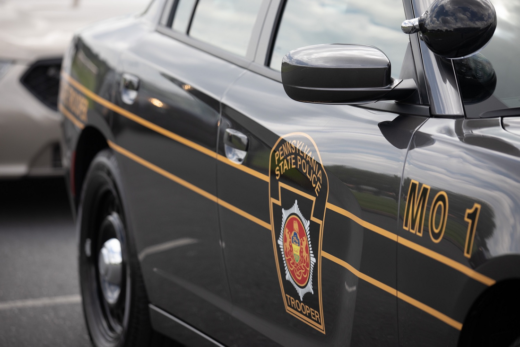Pennsylvania State Police troopers will be testing out body-worn cameras and will soon start implementing them statewide.
The state has entered into a five-year agreement with Arizona-based firm Axon for the body-worn cameras for the pilot program.
Forty-three troopers with Troop H in Carlisle, which sits about 30 minutes from Harrisburg, will pilot the Axon body-worn cameras for the next 60 days, according to Col. Christopher Paris, commissioner of the Pennsylvania State Police.
The troopers will rotate between 18 body-worn systems.
Paris said state police plan to expand body-worn cameras to all 87 stations, including Troop M, which covers Bucks County. No specific timeline was provided.
“These cameras will capture more interactions between troopers and the public than ever before,” Paris said.
“The public rightfully expects their interactions with police be safe, respectful, and constitutional, and I believe the use of body-worn cameras demonstrates that the Pennsylvania State Police is committed to providing faithful and honest law enforcement services,” the commissioner added.
Drawing parallels to the mobile video recording cameras used in patrol cars for the past 20 years, Paris emphasized the cameras’ dual purpose. They will not only bolster transparency and accountability but also provide valuable evidence in criminal investigations and serve as a tool for training.
New in-car cameras and body-worn cameras will store footage via a cloud-based system and not require much additional work of troopers, who provide primary law enforcement response to 87 percent of the state.
David Kennedy, the president of the Pennsylvania State Troopers Association, said his members are supportive of the body-worn cameras and their expanded use, but he also called for lawmakers to increase the size of the force from the current number of 4,740 troopers.
When asked by a reporter why the state police were adding body-worn cameras years after other agencies began using them, Paris said the agency had car-based cameras, but the use of body-worn cameras were slowed due to needed technology upgrades. He also said the size of the force and its scope meant that finding a suitable system and implementing it took time.
The pilot program will allow state police administration to fine-tune best practices, set definitive policies, and assess any needs for supplementary equipment or software enhancements before the expansion of the body-worn cameras.
Paris said several governors and the legislature have been supportive of the addition of body-worn cameras. He thanked Gov. Josh Shapiro, a Democrat and the state’s former attorney general, and the legislature for their most recent support.
The choice of Carlisle as the pilot’s hub was strategic due to its demographic closely mirroring the entire state and varied terrain. Another factor was Troop H’s proximity to the Pennsylvania State Police Bureau of Communications and Information Services in Harrisburg, which oversees the program.










